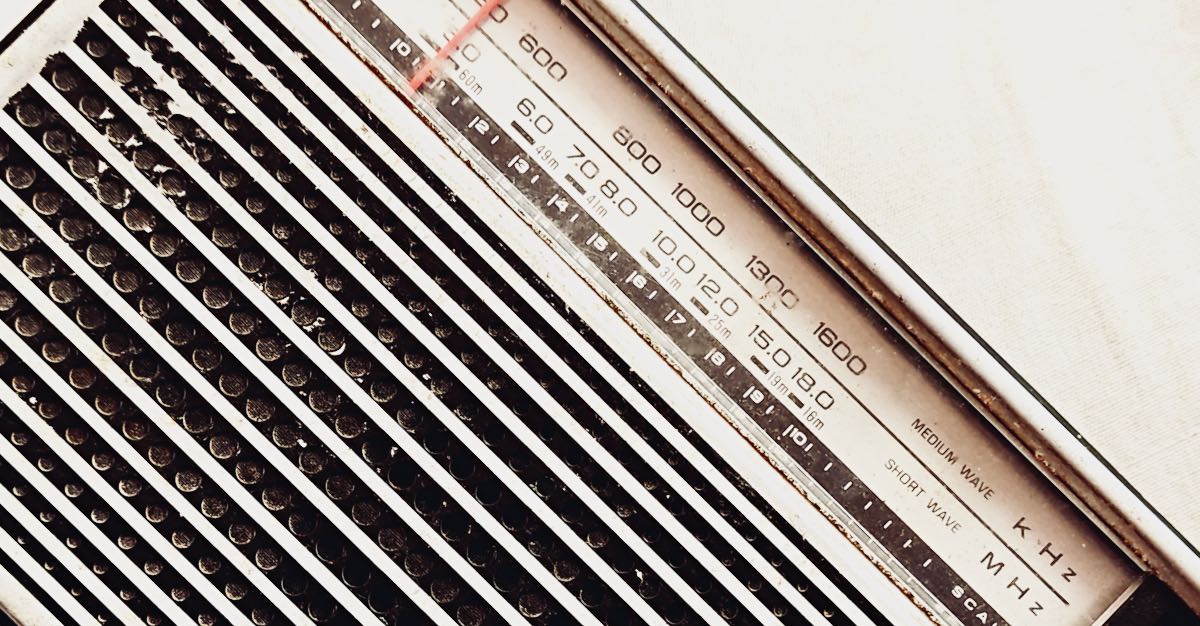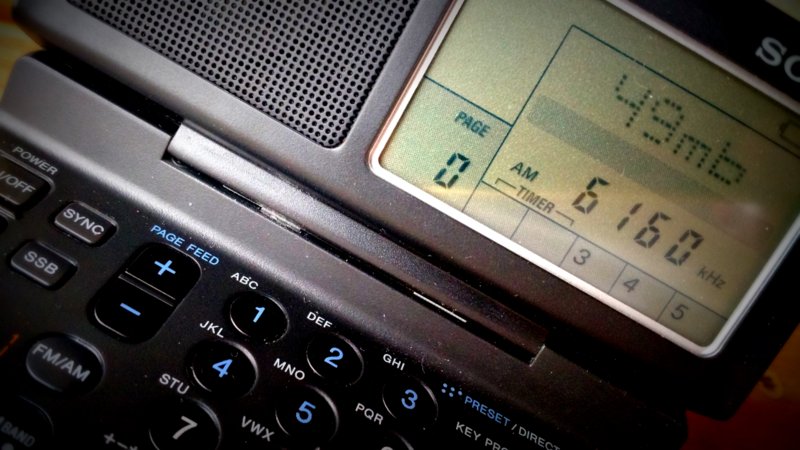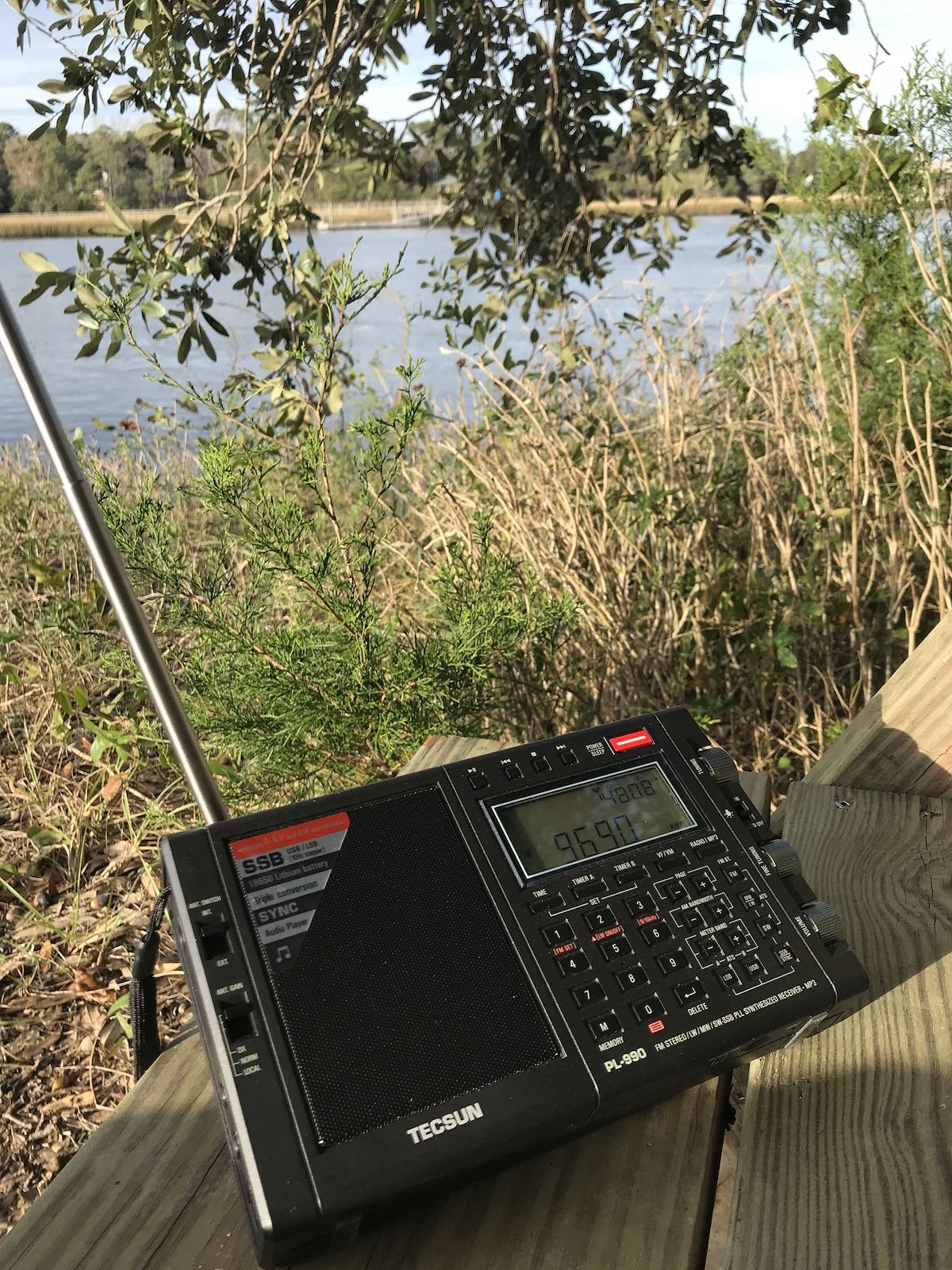
Screen shot taken from a nearby resident’s video showing missile attacks on Kiev TV tower (via YouTube)
There’s a reason why Russia disabled Kyiv’s TV tower with two missiles on the morning of March 1, 2022.
As Ukraine’s Defense minister was quoted in The Guardian: “Moscow aims to cut off communications to ‘break the resistance of the people’.”
One of the first things an invader tries to shut down is a country’s free press; traditionally, this has meant swift control of newspapers and radio. No surprise here–this is a standard part of an invader’s playbook.
These days, of course, this also includes TV and the Internet. So far, Russia’s attempts to completely cut off Internet in Ukraine hasn’t been successful, but it’s not from a lack of trying.
In fact, even within Russia social media platforms have been blocked or severely restricted to prevent the free-flow of information among its citizens. Russia has even shut down one of its oldest radio stations for not toeing the party line with Ukraine coverage.
Propaganda machines are most effective when there’s no competing sources of information.
Why shortwave radio?
Shortwave portables are accessible, affordable, and effective tools for circumventing censorship.
It’s sad that they aren’t as common as they were back in the Cold War. Most people under 40 years old have likely never used or even heard of shortwave. I mean, if so many today don’t realize that you can receive television over the air, how could we expect them to know what a shortwave radio is?
Unlike the Internet–robust and decentralized as it may be in some countries–shortwave radio can’t be controlled by any one ruler or easily shut down. Shortwave broadcasting infrastructure isn’t within reach of an invader without causing a serious international conflict.
In addition, radio listening is an amazingly covert and untraceable activity. With a good pair of earphones, you can listen to any station within range and no one will be the wiser. A radio can’t be confiscated and the owner’s listening history exported.
Smart phones, on the other hand, often have location services in play which leak user location information. Unless encryption is used, those in charge of internet services also have access to all communications that pass through the pipeline as well.
It’s not difficult for those in power to gain access to information that passes through the internet.
Don’t get me wrong: smart phones are amazing tools. They give the user access to news, social media, and instantaneous information that might help their ability to seek safety–but they require a little savvy if you don’t want to be tracked. They also need frequent recharging. Shortwave portables, on the other hand, will often last weeks if not months on one set of batteries. They allow you access to international news, and the vast majority can deliver local and regional news via FM and Mediumwave stations.
Most importantly, though? Shortwave radio is the ultimate free speech medium, as it has no regard for national borders, nor for whom is in power (or not in power) at any moment. Shortwave radio works everywhere on the planet; no matter how remote you are, you can still receive stations over shortwave.
So yeah. I think every family should have at least one shortwave radio. Especially when someone is actively trying to cut off your access to news and information.
Note to our friends in Ukraine:
The BBC has added two shortwave broadcasts to Ukraine on 5875 kHz from 8/10 UTC and on 15735 kHz from 2/4 UTC.
SWLing Post readers, please comment if you know of other new shortwave broadcasts to help those in Ukraine and Russia.




radios that actually live up to their names and actually RECEIVE more than a handful of CLEAN stations, cost so much that as a hobby this is almost as dear as ham radio itself.
What about Long Wave?
WTWW has broadcasts to Ukraine on 9940 at various times.
https://www.retekess.com/V115-Portable-AM-FM-Radio is listed here for $31. I bought mine for $18. With a longwire antenna you may be surprised at the reception. It also records on a flash card…so if you look for this (and there are similar radios under different brands) -you can find ’em pretty inexpensive
This is one of the radios I thought about – see my note below.
Most of these units have the same weakness: no usable tuning knob. Either you can scan the whole SW range up and down. Or you have a semi-analog scale where one program is only a hair away from the next. If you only use a few standard channels you can assign memories to – for example all frequencies the BBC World Service can be heard in your area for the season.
Another thing to consider: Most of these radios have no front end selectivity at all. If any transmitter is active in you proximity everything you can hear might be that single transmitter.
I have a quick question for everyone. Is it possible to build a crystal radio to pick up shortwave stations or will the signals be too weak?
I’m in the process of making one and have absolutely no experience at all. I just recently got into shortwave after coming across my father’s old radio (2 band MW/SW) he purchased over in Japan while in the US Navy. It’s a little dinged up, the volume isn’t that loud, but I’m able to pick up a few stations. I think it was manufactured in the 50’s.
So back to the crystal radio. Maybe someone could post a short blog entry. Will the frequencies be determined by antenna length, tuning coil……..
Any info would be greatly appreciated.
The problem less of sensitivity and more selectivity: You would hear several of the strongest station at the same time. And forget it if your antenna is less than 10-20 meters long.
If you wish to experience shortwave but do not want to invest much money, get one of the receivers in the 20-30 US-$ range. There are even cheaper ones, but from my experience they are very difficult to operate.
Those extremely cheap radios are good for emergency bug-out bags or similar tasks. A radio that gives you some joy for a longer time might cost around 100 US-$. Look out for the radio reviews in this Web site.
I hag a w9nd up radio in the islands which is also useful to have whe your batteries are flat or cant get batteries . nifty little thing it was but didnt have SW https://youtu.be/jM7RcgZ1pLE
Any RF receiver can be useful in this day and age, and the SW suggestion is not falling on deaf ears. I live in fire-prone California and it’s widely noted that if a wildfire happens, the local utilities can shut off their service virtually with little or no notice. In our neighborhood the best place to find an AM/FM radio is either Walmart or CVS. Shortwave receivers at HRO…but nowhere else that I’m aware of. So thanks to Amazon and other online retailers they’re definitely out there. We just need to (as a group of SW users) get the info out there to the general population. We’re more than just a bunch of knob twisters and antenna climbers..(I know YOU know that- let’s get the rest the world to know it). An investment in a SW receiver (or two) puts the cap on the need to spend in case of an emergency other than batteries. These are great ideas.
Agreed on all points – though it’s a little like preaching to the choir, as your regular readers already understand the value proposition of shortwave. The bigger issue, already addressed in some of the comments is that there needs to be more content. Reliable shortwave broadcasting requires big, expensive facilities that take considerable time to stand up. When a fresh conflict breaks out, it’s too late. Note here that I am differentiating shortwave broadcasting facilities from something a ham or pirate might throw together.
There are still several working high power sw broadcasting facilities available in a number of European countries, including Austria, Bulgaria, France, Germany, Romania, United Kingdom. But so far there are no programs in Ukrainian available from international station to be broadcast on sw.
ORF has extended its shortwave service for Europe due to events in Ukraine:
https://der.orf.at/unternehmen/aktuell/radiojournale-kurzwelle100.html
In addition, see news from World Wide DX Club:
wwdxc.de/topnews.shtml
The current reasons for a lack of high frequency receivers are,
a lack of good quality sound, where the wanted programs are easily found.
The HF radio needs to be used during non-emergency to make it worthwhile getting a radio, which is in competition with smart speakers and phones.
ddddddddddddddddddddddddddddddddddddddddddddddddddddddddddddddddddddddddddddddddddd
If you want to use HF broadcasting in emergencies whether natural or man made, this method of broadcasting needs to be used in non-emergency conditions.
HF AM transmitters are expensive to run because they transmit a carrier which is more than 67 % of the signal power and contains no sound, In addition the transmitting antenna system requires large areas
Finding your program. HF propagation is variable, requiring the transmission frequency to be changed on sunrise and sunset along with seasonal changes. Interference, noise and phasing distortion causes poor sound.
Digital Radio Mondiale, transmits the sound as a series of numbers, the transmitter uses a lot less electricity. The audience is used to good quality internet sound which DRM in the HF bands can supply.
DRM has an Emergency warning Functionality which can limit distribution to a defined geographic area of announcements, maps and detailed text instructions.
Sadly, DRM is dead. The most important chip plant for radio chips burnt down, making the chip crisis even worse.
But this does not help: If you live in a country with censored media or without any media access, you urgently need a small SW receiver. Like you did behind the Iron Curtain.
Small radio receivers can be very small and cost perhaps US$ 20.
Alexander,
The car manufacturers are using SDR receivers in their infotainment systems so the only change from market to market is the firmware loaded.
Since DRM, DAB+ and HD radio use software defined receiver technology and are the same chips with different firmware, which also includes AM and FM decoding, which manufacturer(s) have been burnt down? A year ago, the Japanese chip manufacturer who had the fire was back to full production in June last year! Than manufacturer supplied all of the Japanese brands of vehicles.
That chip manufacturer is not the main supplier of DRM chips.
There was a fire in Berlin, of a maker of machines for making chips, but production is unaffected.
There are plenty of DAB+ digital radios available on line. Aliexpress sells them for $21 US. There is no DAB+ broadcasts in the USA because you have HD radio!
India has 35 very high powered DRM transmitters and more than 4 million new cars fitted with DRM receivers by the manufacturer in their infotainment systems. Nearly all new Indian cars have DRM capable radios installed at no extra cost to the purchaser. India has 1300 million people.
When I looked at http://www.drm.org, I found a maximum of six portable DRM receivers you might be able to buy.
I managed to get the Indian Avion radio when it came out: It cost the equivalent of 200 EUR, which is quite some money in India. It was next to unusable: The developers, despite their desperate efforts you can see in the unit, did not get their EMI problems under control. I tried to give them some hints but never got a reply. Then the radio disappeared from their Web site.
Here in Europe you can count the corporations transmitting in DRM on the fingers of one hand.
The Avion radio is quite old now.
Have You had a look at how man many portable HD radio models are currently available in the USA? I went to the manufacturers’ websites.
I found 3.
Recently DAB+ radios from Chinese websites has halved in price.
Remember HDradio is incapable of high frequency transmission, where as DRM can transmit clear noise free stereo sound.
In India they have high powered HF transmitters broadcasting 2 languages from a single transmitter in both MF and HF bands. Hopefully they will decide soon on digital standard for their commercial broadcasters. This will be in the FM band.
Broadcasters get most listeners in vehicles, which is one reason why there are so few portable radios. In many areas outside of the USA AM has been closed down in both HF and MF bands. You will note in Europe there are many radios which are FM/DAB+ or just FM.
DAB+, due to its around 200 MHz transmission frequency is good for areas of high population density with its small coverage area, where as DRM can cover continents down to just local communities depending on the frequency
Outside India you cannot buy a DRM receiver today, period.
You can possibly import one of the Gospell receivers for $400-600 if you wait a month and communicate directly with an importer – but that’s it.
The DRM consortium pretending DRM is available to the mass market and average consumer is a lie.
All of the radios listed on the DRM website are either vaporware or available only as engineering samples.
Please don’t promote DRM. It’s a dead and useless technology run by an inept consortium who knows nothing about radio. It currently exists only inasmuch to keep the consortium alive. It would have been great if they realized that receiver manufacturing needed jumpstarting when the idea and specification came about 20 whole years ago, but the group whose sole purpose was to promote DRM use never did, instead releasing press releases, not radios.
Everything you described about DRM is “in theory” vs “in practice”. Consumer level receivers are nonexistent, and the ones that have shown up for sale are ridiculous, in the $300-400 range. YES, you can receive DRM with a PC-attached SDR, but that is the domain of radiophile geeks – not average citizens in a war zone that need news.
DRM is a joke and a failure, not because the technology is bad (although today it is outdated, and a new spec could be done patent-free which encumbers adoption) – but because the people behind it are wholly incompetent.
If a digital shortwave standard is to be widely accepted, DRM needs to fail and a fully open-source (read license-free and implementable in general purpose hardware) standard needs to take its place.
DRM is not the solution anyone is looking for, and it’s nothing more than a nerdy curiosity today, save for maybe in a few pockets in India where it’s been subsidized through garbage-grade receivers being paid for by a handful of broadcasters.
All good points. I’ve been listening to the two hour expanded world news from the BBC on 15735.
But I hear it from 9-11 am EST each morning (1400-1600 UTC). Comes in very good here in New Jersey.
73
Bill WD9EQD
Smithville, NJ
Gee, what a great idea it was toshut down all the european sw broadcast stations – NOT
There are even more reasons to own a shortwave radio. For example think of a large-area power outage.
I thought it to be a big mistake when nearly all German-speaking countries decided to switch off AM and shortwave broadcasts 10 years ago. Most of this infrastructure is gone for good.
If _one_ shortwave radio is good to have…. .. I’m in good shape.
I pick up radio Baltic waves (75Kw on 1386 mediumwave) from Lituania with its transmissions in russian, polish, belorussian and ukrainian every evening after dark on my car radio (and any other am radio in our household).
Amsterdam is even closer to Kaunas than Moscow, let alone Kiyiv. Should be booming in Ukrain.
Small correction from Lithuania:
Since 2017, the 1386 kHz transmissions of Radio Poland, Radio Liberty and NHK World are not from Sitk?nai site near Kaunas, but from Viešintos in Utena County.
I am personally glad that I can finally hear high quality broadcasts of BBC World Service here in Kaunas (it is relayed on FM in Vilnius, but not in my city).
At night I can hear Ukrainian radio at 549 and 1404 kHz there as well.
It’s tough to take personal action in a war from afar.
.. to try to make a difference. One thing I did do was take this war as a way to remind the major and former Shortwave broadcasters of their shortsightedness in dismantling and reducing their programs and to encourage those still operating to put even more resources to work and target the area with additional broadcasts. I’m only one person, but maybe some enlightened person reading the message will have new thoughts on this where they work… You never know. I’d suggest a massive writing campaign… I did my part.
Dennis
PS: There is a reason to save old WRTV Handbooks… To see who was broadcasting 10, 20 or more years ago into the Ukraine and Russia.
I don’t want to sound like I’m supporting Putin;but from the Russian government;s point of view,isn’t this another example of the advantages of “outdated” shortwave technology! With RT and Sputnik being switched off in Europe (and probably,elsewhere) and under review in the UK,was it such a good idea to leave shortwave?! Out of interest RT disappeared from my Freeview reception,this afternoon! A notice reads ” This service is currently unavailable” Meanwhile,I can listen to China all day on shortwave,if I want to! The signal is so strong I can listen to it on my,pocket sized,Roberts R9962,while out on a walk (or going to the shop!).
NB: I know some will say,no loss! I’m just making a point!
Russian propaganda in Russian can still be heard during dark hours at 1413 kHz through Radio Vesti FM relayed from Grigoriopol in occupied part of Moldova.
Awesome post . . . Amen, Brother, Amen.
You’ll find related posts here: https://swling.com/blog/2021/10/guest-post-why-listen-to-shortwave-radio/
and here: https://swling.com/blog/2022/02/jock-explores-the-essential-listening-post-part-ii-when-the-lights-go-out/
Cheers, Jock